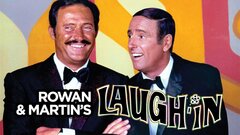Bill Russell

Basketball Player
Birth Date: February 12, 1934
Death Date: July 31, 2022 — 88 years old
Birth Place: Monroe, Louisiana
In his lifetime, sports legend Bill Russell won every basketball honor there was to win, two NCAA and 11 NBA titles, became the first African-American head coach in a major American team sport and off the court, quietly made himself a civil rights hero. Born in the South and raised in Northern California, Russell grew into an imposing 6'9" athletic wonder and became a basketball star at the University of San Francisco in the mid-1950s. He led USF to two consecutive NCAA titles, the U.S. basketball team to Olympic gold, and the Boston Celtics to an NBA title all in the span of two years, yet the fact that he remained a second-class citizen off the court imprinted a proud champion with an icy demeanor characterized by a career-long refusal to embrace public stardom.
The Celtics' 1956 championship would be the first of 11 across 13 seasons with Russell as their center. He became increasingly politicized amid the upheavals of the 1960s yet in 1966, engendered a civil rights victory as he donned the additional duties of head coach of the Celtics. He guided them to two additional titles before retiring in 1969. After a mediocre stint coaching the Seattle SuperSonics in the mid-1970s, he joined CBS as a game analyst. Never a primary offensive threat yet still able to dominate the game, Russell embodied what pure competitive smarts and a chip on the shoulder could achieve, even as repeatedly battled racist institutions that long begrudged him those achievements.
He was born William Felton Russell on Feb. 12, 1934, to Charles and Katie Russell in West Monroe, LA. After suffering Depression-era privation and myriad indignities of Southern racism, Charles moved the family to Oakland, CA in 1942 in search of wartime industry work. The Russells continued to struggle as Charles could only find custodial work and later a job as a truck driver, which kept him frequently on the road and away from the family. That changed upon his wife's untimely death when Bill was only 12.
To assume the daily control of the household, Charles took a job in a nearby steel mill. While Bill grew into a tall, rangy young man, he showed athletic prowess but struggled with basketball. Spotting the potential of the sprouting youth, the basketball coach at Oakland's McClymonds High School, George Powles, helped condition him in the game's fundamentals. Though he would never display spectacular offensive skills, Bill developed into a star for McClymonds by his senior year and played alongside future baseball Hall-of-Famer Frank Robinson.
Russell jumped at a scholarship offer from the nearby University of San Francisco, and for the first time, saw basketball as a way out of the poverty and racism that clouded the futures of African-American youth in the 1950s.
USF coach Phil Woolpert defied racial norms of the period and started three black players, including hot-shooting guard K.C. Jones. The team would face its share of bigotry on the road, particularly in Southern cities where Russell saw unwelcome reminders of his early years, absorbed fusillades of racist taunts, and was barred from staying in segregated hotels. He developed a steely disposition and worked his anger out in his on-court performance as he turned into a ferocious competitor. He wielded an agility typically unseen in 6'9" centers, which allowed him to effectively play a one-man zone whenever a teammate needed defensive help. He accommodated for his lack of natural offensive skills by controlling the boards and scoring on put-backs. Russell averaged 20 rebounds and 20 points a game as of his sophomore year and, in 1955 and 1956, led USF to consecutive NCAA titles. He won the tournament MVP award on his first trip to the Final Four but found himself oddly snubbed for other awards conspicuously won by Caucasian players, which only exacerbated his racial alienation. In spring 1956, the NBA's St. Louis Hawks drafted him, but Boston Celtics coach Red Auerbach was so gung-ho on Russell that he engineered a major trade to bring both Russell and fellow draft-pick Tom Heinshon to the Celtics.
Auerbach himself had selected K.C. Jones, and he also defied norms of the time by paying Russell an All-Star rate of $24,000 a year. The off-season proved auspicious for Russell, as he and Jones helped lead the U.S. Olympic basketball team to a gold medal at the Melbourne Olympics, and he married his college girlfriend Rose Swisher. Because of the rules of amateur athletics at the time, Russell did not officially take the court for the Celtics until mid-season but, when he did, joined a talent-packed team led by guard Bob Cousy. He made an immediate impact with per-game averages of 14.7 points and 19.6 rebounds (tops in the league), and the team gelled around him both as a defensive anchor and offensive catalyst as his shot-blocking and rebounds ignited the Celtics' fast-break offense. The Caucasian Heinsohn won that year's Rookie of the Year award - which became a bone of contention in the pair's professional relationship - as Boston went 44-28 and went on to the NBA Finals against the Hawks. The Celtics rookies wowed basketball fans in the tightly contested series: Heinsohn scored 37 in a Game 7 overtime win while Russell pulled down a whopping 32 rebounds.
He upped his line to 16.6 ppg and 22.7 rpg in the 1956-57 season and won his first league MVP award on the way to a Finals rematch with the Hawks. But Russell sustained a foot injury in Game 3, and Hawks would win the series in six. The Celtics rode a 52-win season into the Finals in the 1957-58 season, and this time prevailed against the Minneapolis Lakers, which began an epoch of dominance no team in any sport would achieve again. The arrival of 7'1" center Wilt Chamberlain with the Philadelphia Warriors the next year introduced a marquee NBA clash of titans, pitting Russell's nonpareil defense with Chamberlain's blistering scoring. The two teams met in the Eastern Division Championship series, but the Celtics' team play - and strategic fouling - eclipsed Chamberlain's phenomenal individual performances. The Celtics went on to defeat the Hawks again in the Finals as Russell set a championship series record by pulling down 40 rebounds in Game 2. He set a league record in the 1959-60 season by grabbing 51 boards in a single game against the Syracuse Nationals in February 1960, but Chamberlain would top that with a 55-rebound game the next year.
Even as African-Americans were increasingly represented in the league's elite, they remained second-class citizens outside the arena, and Russell's increasing success came with exponential intolerance of American apartheid. He found himself at the center of a much-publicized dust-up when, prior to a 1961 pre-season game in Lexington, KY, Russell and fellow African-American Celtics K.C. Jones, Sam Jones and Tom Sanders were refused service in a local hotel coffee shop, and so they boycotted the game and returned to Boston. He also developed a reputation for a chilly disposition toward media, fans and even teammates and became notorious for refusing to sign autographs. His militant support of the civil rights movement prompted the FBI to open a file on him. Russell would win the MVP again in 1961, 1962 - even in spite of Chamberlain's nigh-unfathomable 50.4 ppg season - 1963 and 1965 amid the Celtics' never-again-equaled eight-championship run. Prior to the 1965-66 season, the Warriors, having relocated to San Francisco, shipped Chamberlain back east to the Philadelphia 76ers. The team surrounded the center with talents to finally rival the Celtics and made Chamberlain the first NBA star to make a $100,000-per-year salary. Auerbach promptly one-upped that by boosting Russell's to $100,001, and the Celtics took their eighth-straight the next spring.
Prior to the 1966-67 season, with Auerbach retiring to the team's general manager office, he tapped Russell as his successor, which made the latter a rare player-coach and the first African-American coach in professional basketball. But that season, Chamberlain finally gained the upper hand. He added eight assists per game to his offensive output as the Sixers adopted the Celtics' free-wheeling fast-break style and dominated the Eastern Division with a 68-win regular season. They finally downed the Celtics in five games in the Eastern Finals and went on to take the title. Though his scoring output declined, Russell still averaged 18 rpg and guided the Celtics to a playoff rematch with the Sixers the next year. The latter jumped out to a seemingly insurmountable 3-1 lead in the series, but Russell's defense keyed three straight victories to make the Celtics the first in league history to come back from such a deficit to win a series. They advanced to defeat the Los Angeles Lakers for Russell and the Celtics'10th title and his first as coach, for which Sports Illustrated named him its Sportsman of the Year. But he was not immune to the times. As de-segregation bussing exacerbated racial tensions in Boston, he felt increasingly alienated in the city and depressed generally over the violent extremes that had met the civil rights and antiwar movements in 1968. He nevertheless played and coached out a final season, averaged 9.9 ppg and a still-dominant 19.3 rpg, and managed to coax the aging squad back through the playoffs to a rematch with the Lakers.
But the latter had added Chamberlain to a team that already included all-time greats Jerry West and Elgin Baylor. An epic series came down the final minutes of Game 7, which the Celtics held on to win 108-106. Russell hauled in 21 rebounds in what would be his final game to garner his eleventh ring. He raised eyebrows when he did not return to Boston with the team and surprised even Auerbach with a quiet retirement, effectively shedding himself of the city and the organization. His career regular-season rebound tally of 21,620 and 22.5 rpg average remained second all-time to Chamberlain's totals. Russell did not attend the 1972 ceremony in which the Celtics retired his No. 6 jersey, nor his induction ceremony into the Naismith Memorial Basketball Hall of Fame three years later - which made him, incredibly, the first African-American so honored. His marriage to Rose, having produced three children, ended in 1973. The Seattle SuperSonics lured him back to basketball that year. He guided the talent-light expansion team to barely winning records and a couple playoff berths, but his four-year tenure would be otherwise inauspicious, as per his overall 162-166 record.
In 1977, he married a former Miss USA, Dorothy Anstett, but the union would only last three years. He took a job as a game analyst for CBS' NBA coverage and, for the first time in his public life, showed an amicable, hearty side to his persona. In 1979, he released a memoir, Second Wind, and became that rare sports figure to serve as host on "Saturday Night Live" (NBC, 1975- ). Next, he called games for CBS through the 1982-83 season. In 1987, the Sacramento Kings hired Russell as its head coach, but the organization gave him the axe three quarters of the way through the season, with the Kings having won only 17 games. Shortly thereafter, Russell retired to his home on Mercer Island, WA and married Marylyn Nault in 1996.
Late in the 1998-99 season, Russell buried the hatchet with the Celtics. In the wake of the team's move to a new arena, he attended the ceremony re-retiring his jersey, with Chamberlain on the court in support. In 2009, the NBA renamed its Finals MVP award the Bill Russell Award. In 2011, President Barack Obama awarded Russell the Presidential Medal of Freedom. Bill Russell died on July 31, 2022 at the age of 88.
Credits
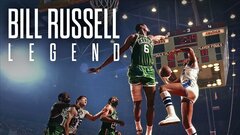
Bill Russell: LegendStream
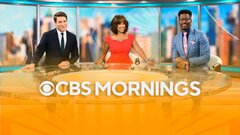
CBS Mornings

Mr. Russell's House
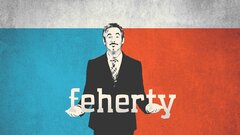
FehertyStream

The Daily Show With Jon StewartStream
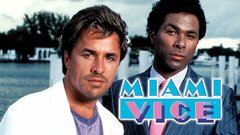
Miami ViceStream

On the Right Track
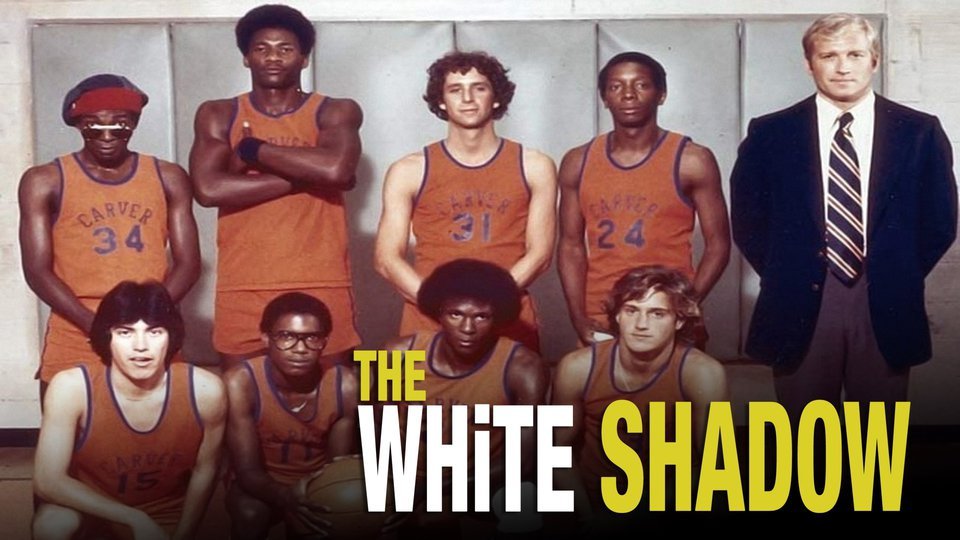
The White ShadowStream

Saturday Night LiveStream
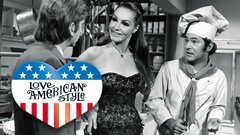
Love, American Style
